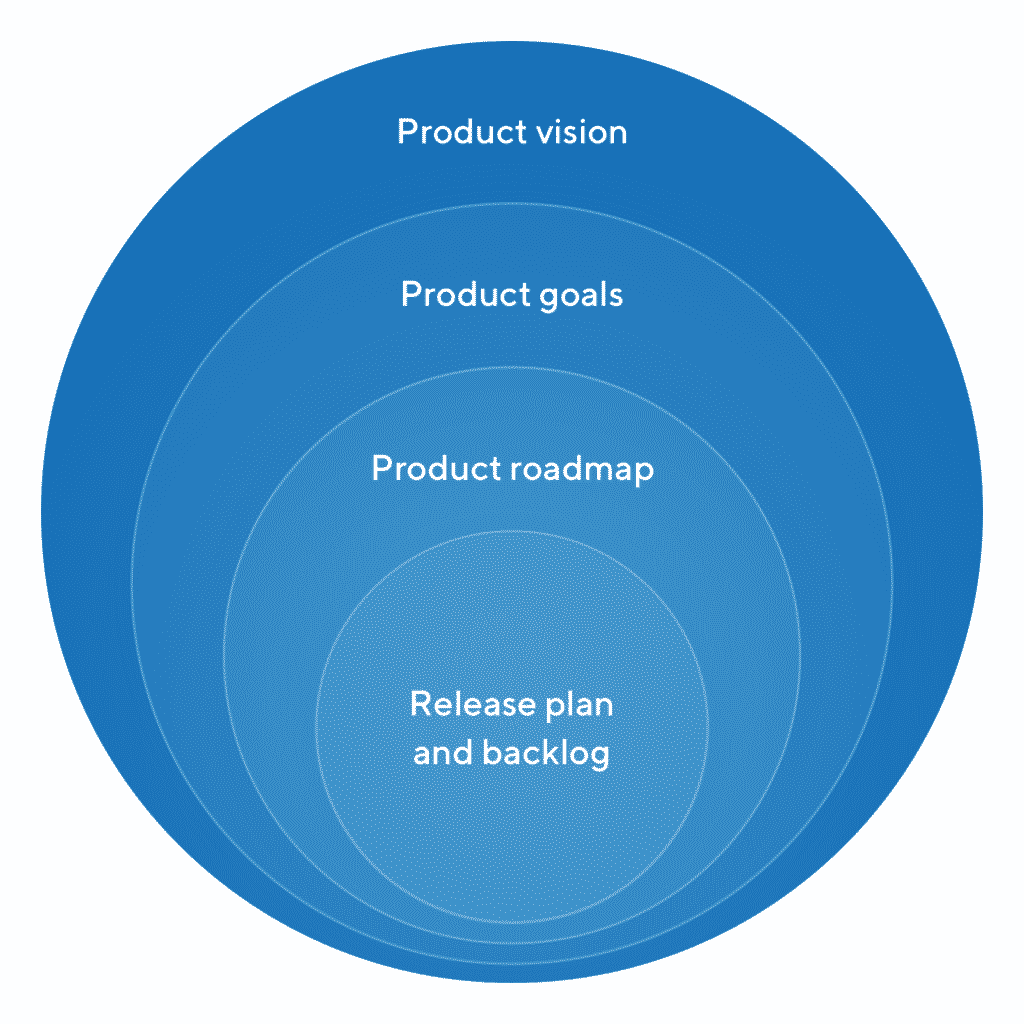Setting the vision and strategic goals for the product are the first steps to creating a successful roadmap.
What happens before you prioritize, build, and share your roadmap is of equal, if not, greater, importance than the roadmapping process itself.
Setting the vision and strategic goals for the product — and, more importantly, getting alignment on these with your stakeholders — are the first steps to creating a successful roadmap. After all, if you don’t really know where you’re trying to go or why, how will you come up with a plan for getting there? And if you can’t get your team to rally behind the plan, how will you make progress toward it?
Furthermore, while products exist primarily to solve problems, they also (in most cases) need to make money somehow. So, business objectives also matter, and the roadmap needs to reflect consideration of them.
Connecting Product Strategy and the Roadmap

Embracing a top-down approach to strategic planning is a popular way to ensure your product roadmap aligns well with both business objectives and long-term aspirations for the product. It also helps define quantitative goals that not only measure progress but also help inform prioritization decisions.
The top-down strategic planning process is fairly straightforward. Start by defining your high-level product vision, then use it to derive actionable, measurable product goals. Your vision and goals then inform your product roadmap. In turn, your roadmap sits a level above your more granular release plan and backlog.
Let’s look at the two parts of the product strategy that come before the roadmap — the product vision and product goals.

Product vision
A top-down approach in the context of roadmapping means starting first and foremost with your product vision. Your product vision, often called a product vision statement or mission statement, is a concise, high-level, aspirational statement of why your product exists. It is a guiding light— out of reach in the moment, but a constant representative of the intended direction. Learn more about crafting a product vision statement.
Strategic goals
From the product vision you can derive product goals that will influence the initiatives that are on your roadmap. Coming up with product goals is the step that helps you translate your product strategy into an executable plan. Every organization’s product goals will be different. You can develop product-specific, company-oriented, or more generic goals.
Ideally, your goals should be measurable and readily tied back to trackable metrics and Key Performance Indicators (KPIs). It’s these types of goals that will resonate most with your stakeholders.
How often should you revisit product vision and strategic goals?
As with most things in life, particularly in business, strategies are rarely set in stone. Your product vision statement should be aspirational and high-level enough that it remains steady on the long term. However, product managers should be prepared to revise it (and even course-correct pivot) if necessary.
Strategic goals, business objectives, and KPIs, are generally also aspirational. But by nature, they will need adjustments, revisions, and resets in time. The cadence at which you make those adjustments will vary from organization to organization. What is important here is that you get into the habit of thinking ahead about how those will change in time.
Many organizations set different tiers of strategic objectives for different time frames. For example, they may set some benchmarks for where the business should be 3 years into the future, then break down those benchmarks into smaller milestones along the way and timebox those milestones in such a way that keeps them on track to meet the longer-term goal (i.e. quarterly check-ins). From those goals, many product managers find it useful to distill sets of more granular objectives and KPIs to be met along the way.
Get Consensus on Strategy Before Setting Sail
Before we go on to discuss how to plan and prioritize your roadmap in the next chapter, a quick reminder.
![]() Reminder: Communicate with stakeholders early and often. Make sure that your team, executive stakeholders, and the organization as a whole will rally behind your product vision and strategic goals. Getting consensus and alignment now will make your life much easier later when you start talking about more specific things like which features to build next.
Reminder: Communicate with stakeholders early and often. Make sure that your team, executive stakeholders, and the organization as a whole will rally behind your product vision and strategic goals. Getting consensus and alignment now will make your life much easier later when you start talking about more specific things like which features to build next.
Furthermore, the conversations that will undoubtedly sprout from sharing the vision and strategic goals throughout your organization represent opportunities to receive feedback that may help you re-adjust your targets.